“I have not lost a single motion since I took [Bailspeak’s Bail Motion class], and I am also winning motions to extend time, because of [Rex’s class], when others there [in Court] are not getting [granted bail motions] theirs. I tell everyone if they want to win motions then take Rex’s [California Department of Insurance Approved Bail CE for six hours] class.”
-Veteran Bail Bond Company Owner & Private CE Client, July 19, 2013
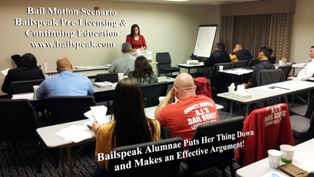
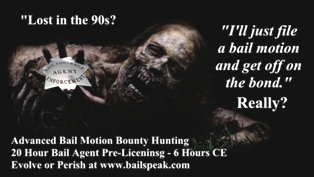
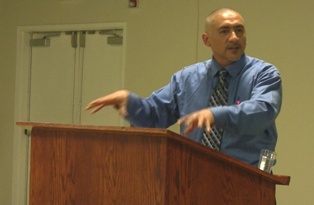
Motion to Exonerate Bail Bond ~ California Bail Motions That Worked!
The Time to Learn Bail Law & Motion is Before Forfeitures are Ordered.
California Department of Insurance Approved for 6 Hours Bail CE
Call the Registrar for Class Enrollment Information at 1-877-726-9092
Copyright 1992 - 2014 Bailspeak, All Rights Reserved
|
|
| A Working Knowledge of the Bail Motion Process is Critical!
A major part of running a bail bond company is, quite frankly, your active willingness and effort to have a working knowledge of how to draft, appear and then stand up in a California Superior Court, fully prepared, to make an oral argument, counter written and oral opposition from government lawyers, and then convince a court that granting your moving papers is the correct action that will also keep your company solvent.
In the Bail Video above, Rex Venator Demonstrates how to get your argument out in 90-seconds and avoid being taken off-point by opposing counsel; indeed, Rex has been drafting bail bond motions and appearing in California Superior Courts as an agent for numerous sureties (Pursuant to California Penal Code Section 1305 subsection j & k) since 1998, and Rex has a 99.7% success rate in winning Orders to Vacate Forfeitures to Exonerate Bonds and with a growing number of recently filed bail bond motions receiving Notice of Non-Oppositions from county counsel and DA attorneys in numerous jurisdictions! |
|
|
|
Can Bail Bondsman Appear in Court? California Penal Code §1305
(j) A motion filed in a timely manner within the 180-day period may be heard within 30 days of the expiration of the 180-day period. The court may extend the 30-day period upon a showing of good cause.
The motion may be made by the surety insurer, the bail agent, the surety, or the depositor of money or property, any of whom may appear in person or through an attorney.
(k) In addition to any other notice required by law, the moving party shall give the prosecuting agency a written notice at least 10 court days before a hearing held pursuant to subdivision (f), (g), or (j), as a condition precedent to granting the motion.
(Amended by Stats. 2012, Ch. 129, Sec. 1. Effective January 1, 2013.)
Important Note: The statute does not include language that would allow an independent contractor bounty hunter to illegally draft, appear in court and, arguably, practice law without a license; moreover, it is worth considering the retroactive liability concerning court ordered exonerated bail bonds if such orders were initially predicated on the unlawful practice of law. |
Bailspeak Pre-Licensing & Continuing Bail CE Class Handouts
DISCLAIMER
By ordering any of the below class handout examples, buyer understands that published case cites should be researched to assure that current precedent has not been superceded, that all sales are final, that each set of documents is for educational purposes only and hereby forever releases and forever discharges Bailspeak, and its/their agents, heirs, executors, administrators, assigns, and successors in interest of an from any and all claims, demands, damages, causes of action(s) and debts whatsoever, in law or in equity, which, may or may not occur either directly or indirectly from purchasing any of the above for information purposes only bail motion packets.
You should
always consult an attorney who practices law,
with an emphasis in bail law, before moving a court.
|
PC 1305(a)(5) Bail Motion to Vacate Forfeiture and Exonerate Bail Bond
· Bail agent attempts to surrender defendant in court with negative results. · The defendant cannot be found. · The Court puts off arraignment, thus effectively nullifying the 15-day rule. · The People do not file a complaint, and the Court refuses to exonerate bond. · In this Bailspeak continuing bail education class handout sample, Moving Parties Argues:
· Penal Code Law · Government Code · Impossibility of Performance · Governmental Interference · Contract Law Argument · Why returning premium, pursuant to PC1300 (b) does not apply · On-Point Case Law inclusion with language
Outcome of Filed Instant Matter: The People file Non-Opposition and bond is exonerated. |
$50.00
Shipping and Handling Included
· 2-Page Notice of Motion · 9-Page Memorandum of Points and Authorities · 5-Page Declaration in Support of Motion
|
|
Contract Law Based Motion to Exonerate Bail Bond
· $150,000.00 Bail Bond Posted for One (1) Charge · DA later adds 5 more Serious Charges · Defendant Takes Unlawful Flight to Iran · Bond is ordered Forfeited · Real Property Collateral is worthless · Bail Attorney sees no Motion
In this Bailspeak 20 Hour Bail Prelicensing Class Handout Moving Party Argues:
· Bail Agent’s Right to Appear · Factual Background · Surety Bond is a Civil Contract · Star Decisis re altered contracts · Impossibility of Performance · Voided Contract No Arrest · Object of Bail · Reasonable Bondsman · Conclusion |
Outcome: Forfeiture Vacated Bond Exonerated Pursuant to "Triple Attack Theory" and Application of Bounty Hunting
Faxed $75.00 Shipped $85.00
|
|
PC 1305 (d)(1) & (2) Motion to Exonerate Bail Bond Forfeiture
In This Bailspeak 20-Hour Pre-Licensing Bail Motion, this Class Handout Sample includes the Following Arguments from the Surety:
|
$99.99 22-Pages Total Shipping & Handling Included
|
|
PC 1305 (b)(1) Bail Motion to Exonerate Bail Bond A court clerk fails to mail the Notice of Forfeiture wtihin 30-Days. In this Bailspeak Continuing bail education class handout sample, moving parties argue:
Outcome of Filed Instant Matter: Non-Opposition Filed |
$40.00 Shipping and Handling Included
|
|
PC 1305.4 Bail Motion to Extend Time Bail bond motions to extend now require a variety of elements, according to recent published case cites
Bail Fugitive Recovery Persons may be asked by a bail agent to produce a Declaration based on personal knowledge in support of a bail bond motion to Extend time.
This 12-Page Hardcopy Informational Packet includes the Notice of Motion, Memorandum of Points and Authorities, and Declaration in Support of Motion. |
$30.00 Shipping & Handling Included
|
|
Advanced Bail Bonds and Bounty Hunter Training on Bail Bond Motion Studies New for 2013! Motion to Exonerate vs. Return of the Bounty Hunter - Opinion Editorial by Rex Venator Not too long ago, taking action to get a forfeited bond exonerated was largely left to the devices and machinations of bail bonds people and their bounty hunters, but the times and tolerances of local governments are changing insofar as I can see. A prime example lies within the process to move a court with a bail bond motion and all of the parts that go with moving papers. For example, courts used to take for granted that people who drafted moving papers and the ones who showed up for bail motions were being truthful and that was that in many cases; moreover, the laws regarding who may lawfully appear have been in place and largely overlooked. Today, I am informed and believe that there may very well be cases where people, who grew accustomed to playing around in the gray areas of the bail bond motion process, have been blindsided by the consequences of doing so inasmuch that California is broke and looking for revenue streams. The interesting part here is that the courts are simply enforcing some of the rules and laws that have always been in place. Of notable interest are the retroactive results of hindsight investigations into whether or not formerly granted bail motions were properly granted in the first place. If not, then there are some people who may be financially hurt or even ruined by playing games with the courts. Every piece contained within every part of moving papers must be done correctly. By parts I mean not only the traditionally filed documents but the sub-documents must also be correct and then supported by proof correctly and along with a bunch of other rules that have to be followed. The plain and simple fact of becoming a bounty hunter who is asked to produce declarations and spot technicalities, or to become a bail bonds company owner is that you must understand the bail motion process not only to be competitive but to survive and thrive in the bail bonds business." My strong suggestion at this time if you do not know how to move a court is to hire an attorney who practices with an emphasis in bail law. If you cannot afford an attorney then it may be well worth the time and effort to seek out training and education on the subject matter raised above.
Video Shot in 2003
Opinion Editorial Posted on January 3, 2011 California Appellate Court Responds |
Click on the Above Photo for more Bail Motion Samples.
Click on the Above Photo for a Bail Video showing Bailspeak's classes, Bounty Hunting and other great information!
Can Independent Bounty Hunter Contractors who are not Licensed Bail Agents Draft and Appear on a Bail Bond Motion for Sole Proprietorships or Bail Bond Corporations?
Opinion Editorial & Analysis
By Bailspeak’s Primary Bail Education Instructor, Rex Venator
The following is based on my personal, layman’s opinion as a private citizen who is simply observing his civic duty.
I thought to follow up and add that the prior email on bounty hunters drafting moving papers and appearing in court for a bail bond surety isn’t applicable, in my personal opinion, with a licensed bail agent, appointed as an agent by the real party in interest bail bond surety moving a court, drafting and appearing under penal code law—so long as the bail agent is appearing for a sole proprietorship and not a bail bond corporation.
It is my personal, layman’s opinion that Penal Code §1305 subsection j does allow for “the bail agent” to draft and appear for an unincorporated bail bond company when he or she is appointed by the surety upon which the bond was written.
It is my personal, layman’s opinion that Penal Code §1305 subsection j carries greater weight and is deemed controlling over Business and Professions §6125 for the purposes of bail agents drafting and appearing on instant, civil matters injected into an existing criminal matter before a superior court.
There are published case cites, however, where the Civil Code of Procedures has sections that are controlling over certain Penal Code, bail related sections, but, for the purposes of this personal opinion analysis, bounty hunters who are not licensed bail agents and appointed by the surety do not have standing under Penal Code §1305 subsection j to draft and appear in superior court and are subject to Business and Professions §6125 penalty—in my personal, layman’s opinion.
It is my personal, layman’s opinion that the curiously lamented reference to an obscure California Civil Code of Procedure section that allows for a bounty hunter “surety insurer” to draft and appear in court is seriously flawed and fatal to any bounty hunter’s argument to the extent that Civil Code of Procedure 995.120 subsection a and b defines a “surety insurer” in part as follows: “‘Admitted surety insurer’ means a corporate insurer or a reciprocal or interinsurance exchange to which the Insurance Commissioner has issued a certificate of authority to transact surety insurance in this state, as defined in Section 105 of the Insurance Code,” “For the purpose of application of this chapter to a bond given pursuant to any statute of this state, the phrases ‘admitted surety insurer,’ ‘authorized surety company,’ ‘bonding company,’ ‘corporate surety,’ and comparable phrases used in the statute mean "admitted surety insurer" as defined in this section.”
Whereas, it is my personal, layman’s position that a bounty hunter appearing for a bail bond company as an independent contractor is, arguably, not drafting and appearing as an agent for the surety in any capacity and in such instances the matter in question then defaults to Business and Professions §6125 primarily because one well established structure of bail agents appearing for their own non-incorporated bail companies in superior courts reverts to another dictum based structure where, plainly stated, a private citizen—not even a corporate officer of the surety, which is also not applicable for the purposes of this personal, layman’s analysis—is somehow not even appearing in propria persona for the corporation and is likened to any person simply walking in off the street not to self-represent but to represent an entity that he or she isn’t even a corporate officer or shareholder of and all of which is because the bounty hunter is not a licensed bail agent who is appointed as an agent for any surety.
To be succinct in the interest of brevity, in my personal, layman’s opinion, a bounty hunter working as an independent contractor for a bail bond company is disallowed to appear under Penal law; moreover, Civil Code of Procedures does not apply because in the absence of Penal law applications the bounty hunter is then personally appearing for an incorporated surety where, arguably, said bounty hunter is engaging in the “unlicensed practice of law;” indeed, a corporation is not a natural person and cannot appear in propria persona; it can only appear through counsel with the exception of sending a corporate representative to small claims under Code of Civil Procedure section 116.510.
References
Thus California today defines law practice as providing “legal advice and legal instrument and contract preparation, whether or not these subjects were rendered in the course of litigation.” Birbower, Montalban, Condo & Frank, P.C . v Superior Court., supra, at 128. Providing legal advice or service is a violation of the State Bar Act if done by an unlicensed person, even if the advice or service does not relate to any matter pending before a court. (Mickel v. Murphy (1957) 147 Cal.App.2d 718, 721.)
The lead case on this is Paradise v. Nowlin (1948) 86 Cal.App.2d 897. Subsequent cases have affirmed its holding that corporations cannot appear pro per for three distinct reasons: (1) any representative sent on behalf of the corporation would be engaged in the unauthorized practice of law; (2) the rule ensures that qualified professionals will appear in court, thereby increasing the efficient and proper administration of justice; and (3) the distinction helps to maintain the wall between the corporation as an entity and its individuals shareholders, directors, and officers. (Id.; see also CLD Construction, Inc. v. City of San Ramon (2004) 120 Cal.App.4th 765, 773.)
A corporation is not a natural person, and therefore cannot appear in an action in propria persona. It can appear only through counsel. (Merco Construction Engineers, Inc. v. Mun.Ct. (Sully Miller Contracting Co.) (1978) 21 Cal.3d 724, 731.) This prohibition stems from the notion a corporate representative who would likely appear on behalf of the corporation would be engaged in the unlicensed practice of law. (Gamet v. Blanchard (2001) 91 Cal.App.4th 1276, 1284.) The prohibition against a corporation's “self-representation” in court also furthers the efficient administration of justice by assuring that qualified professionals present the corporation's case and assist the court in resolution of the issues; and it helps maintain the distinction between the corporation and its shareholders. (CLD Const., Inc. v. City of San Ramon (2004) 120 Cal.App.4th 1141, 1146.)
PC §1305 (j) A motion filed in a timely manner within the 180-day period may be heard within 30 days of the expiration of the 180-day period. The court may extend the 30-day period upon a showing of good cause. The motion may be made by the surety insurer, the bail agent, the surety, or the depositor of money or property, any of whom may appear in person or through an attorney.
PC §1305 (k) In addition to any other notice required by law, the moving party shall give the prosecuting agency a written notice at least 10 court days before a hearing held pursuant to subdivision (f), (g), or (j), as a condition precedent to granting the motion.
(PC 1305 Amended by Stats. 2012, Ch. 129, Sec. 1. Effective January 1, 2013.)
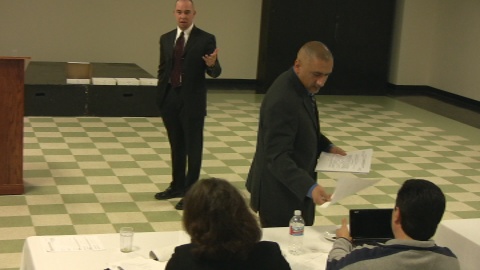
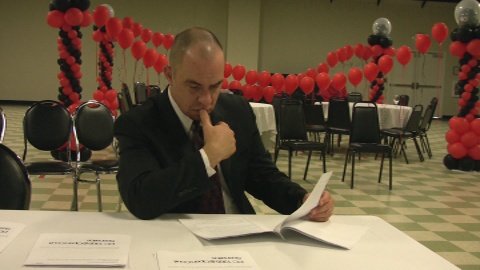
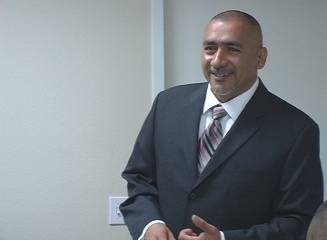
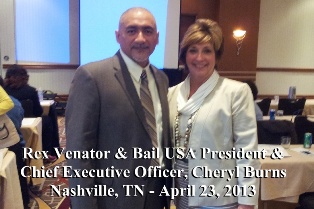
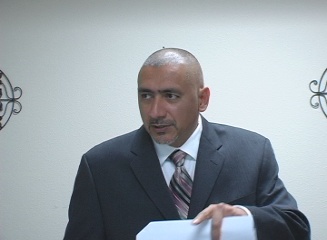
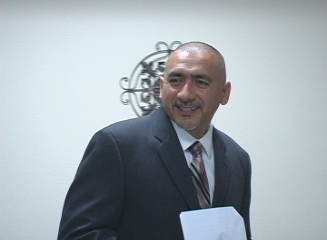
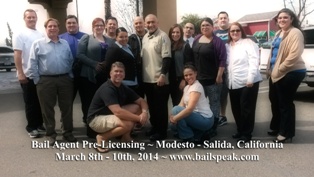
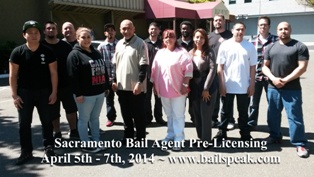
Defense counsel mails me the whole file on two bounty hunters looking at felony false imprisonment, felony kidnapping, and felony conspiracy charges.
Allegedly, the bounty hunters knowingly detained, restrained, and moved a third party person who was not the bail jumper they were trying to locate and apprehend.
Within minutes of beginning my expert bail witness analysis, I call the criminal defense attorney back and explain why, which statutes my opinion is based, which case cites to reference in support of my personal opinion, and the investigation and pending charges are all now ancient history.
Many, including the surety and the bail bond company who hired the bounty hunters are pleased.
My work as an expert bail witness has presented me with numerous perspectives from those within and those trying to understand how the California Bail Bond Industry works from the outside.
While the surface point is how complicated bail really is, one should take caution in deciding how to proceed in bail or bounty hunting because “they” are out there “watching” what we’re doing.
The good news is that we can negotiate our ways through bail bonds and bounty hunting while never having to have someone like me look over the allegations made against you and with the right bail education engineered to keep you out of civil court, criminal court and the morgue.
Stay Safe and Watch Your Sixes ~ Rex Venator, Bailspeak Primary Bail Instructor
SEE DESCRIPTIONS OF
BAIL BOND MOTION SAMPLES BELOW
Sample Bail Bond Motions are for bail educational purposes only, and you should always seek the advice of an attorney who practices law with an emphasis in bail law for legal advice.